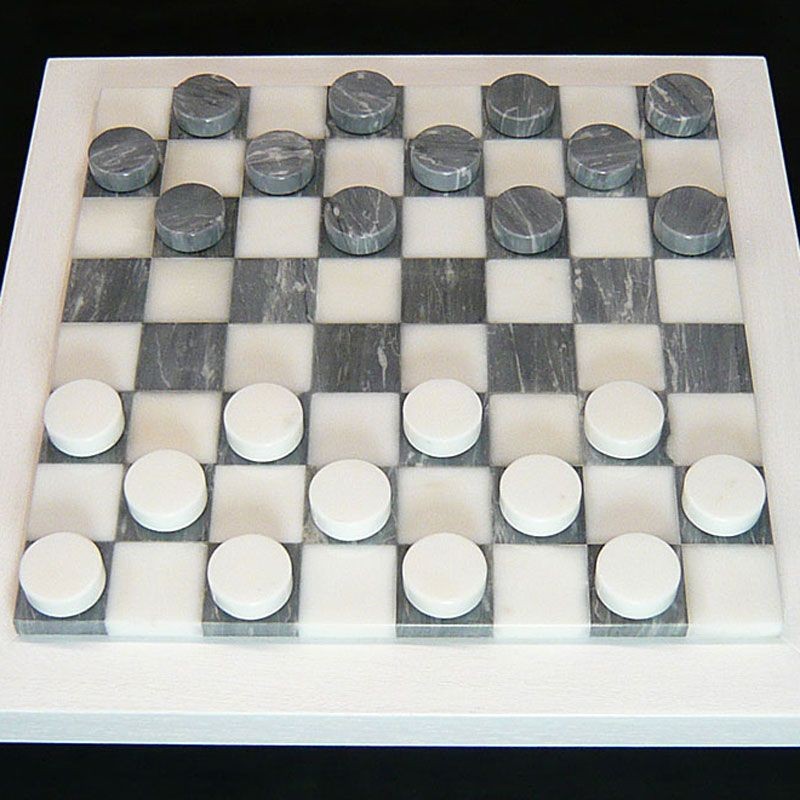Set of 32 pieces ( 16 + 16 )
Artistic creation in recomposed marble, handmade and hand-painted by master craftsmen
Call us:
+39 337 689965Reference: BRDABCBA
 Security policies
Security policies
Transactions on PayPal secure server
 Terms and Conditions
Terms and Conditions
Read our term and conditions
Draughts (British English) or checkers (American English) is a group of strategy board games for two players which involve diagonal moves of uniform game pieces and mandatory captures by jumping over opponent pieces.
Draughts developed from alquerque. The name derives from the verb to draw or to move.
Draughts is played by two opponents, on opposite sides of the gameboard. One player has the dark pieces; the other has the light pieces. Players alternate turns. A player may not move an opponent's piece. A move consists of moving a piece diagonally to an adjacent unoccupied square. If the adjacent square contains an opponent's piece, and the square immediately beyond it is vacant, the piece may be captured (and removed from the game) by jumping over it.
Only the dark squares of the checkered board are used. A piece may move only diagonally into an unoccupied square. When presented, capturing is mandatory in most official rules, although some rule variations make capturing optional.
In almost all variants, the player without pieces remaining, or who cannot move due to being blocked, loses the game.
Ancient games
Similar games have been played for a millennia. A board resembling a draughts board was found in Ur dating from 3000 BC. In the British Museum are specimens of ancient Egyptian checkerboards, found with their pieces in burial chambers, and the game was played by Queen Hatasu. Plato mentioned a game, πεττεία or petteia, as being of Egyptian origin, and Homer also mentions it. The method of capture was placing two pieces on either side of the opponent's piece. It was said to have been played during the Trojan War. The Romans played a derivation of petteia called latrunculi, or the game of the Little Soldiers. The pieces, and sporadically the game itself, were called calculi (pebbles).
At the base of the Apuan Alps, Carrara represents a unique reality in the world for its marble caves. Among the first who ventured into marble extraction there were the Romans who, inserting fig wood beams into the natural holes of the rocks, filled these ones with water until they completely impregnated the beams causing the cracking of the rocks. This extraction technique has been unchanged, but for little variations, till the Renaissance when Michelangelo started to frequently visit Carrara area to choose directly the raw material for his works.
Even today skilful craftsmen work this material with ability, creating wonderful pieces of art and decorative objects that represent important pieces of furniture.
Data sheet

Set of 32 pieces ( 16 + 16 )
Artistic creation in recomposed marble, handmade and hand-painted by master craftsmen
Set of 32 pieces ( 16 + 16 )
Artistic creation in recomposed marble, handmade and hand-painted by master craftsmen
Made of White Carrara and Black Marquina marble.
Mounted on black wood base and frame, finely worked.
Set of 32 pieces ( 16 + 16 )
Artistic creation in recomposed marble, handmade and hand-painted by master craftsmen